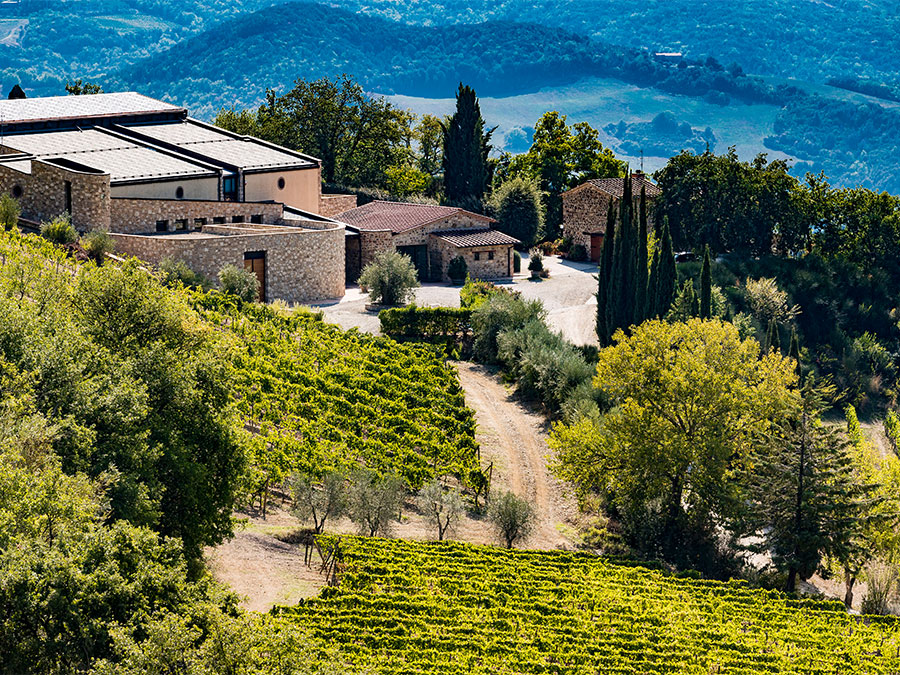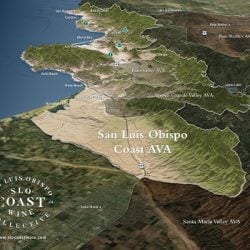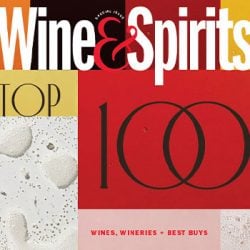Every year, our critics taste hundreds of wines from around the world. These are the wineries that newly piqued their interest in 2022 and will be on our radar to watch in 2023.
France
Champagne
Oudiette & Filles
Founded in 2014 with six acres, this small family estate is run by Margot Laurent along with her sister Charlotte and their mother, Florence. They tend nine plots in Beaunay, just east of the southern reaches of the Côte des Blancs; the vines range in age from 30 to 63 years old, 42 percent chardonnay, 48 percent meunier and 9 percent pinot noir. They farm without herbicides or insecticides and are working toward organic certification. Margot produces single-parcel wines like the Uni Terre Extra Brut, a chardonnay fermented in used oak barrels and bottled as her first release—a toasty and vinous wine as firmly mineral as a Chablis. —J.G.
De Maison Selections, Chapel Hill, NC
Rhône Valley
Château de Rouanne
After helping with the 2018 vintage, Rhône vintner Louis Barruol of Château de St-Cosme purchased this 177-acre estate in Vinsobres in May 2019. He was attracted by the quality of the plantings—153 contiguous acres of a massal selection of grenache, syrah and mourvèdre, all at least 50 years old—as well as the history of the estate, which dates to Roman times. He’s already identified several standout parcels that he bottles on their own, such as Les Côtes, a single hectare of grenache, syrah and mourvèdre from the top of the slope, or the mid-slope five-acre Rouanne et les Crottes, which turns up so many shards of ancient pottery and artifacts that they believe it may be on the site of an ancient Roman villa. —T.Q.T.
Winebow, NY


Château La Croix des Pins
Jean-Pierre Valade and Eric Petitjean were working in Champagne before they decided to decamp to a warmer, sunnier climate, purchasing a 16th-century estate in Mazan, just south of Gigondas, in 2009 and launching the winery the following year. Their 2019 Gigondas Les Dessous des Dentelles, from the estate’s 17 organically farmed acres under the jagged, toothy mountains that mark Gigondas, is ripe and elegant, with firm tannins holding the spicy cassis fruit to an elegant line; their 2018 Beaumes-de-Venise, from ten acres in the foothills of Montmirail, is a sumptuous, balanced dry red. —T.Q.T.
Cape Classics, NY
Georgia
Kakheti
Chona’s Marani
Mikheil Chonishvili started his winery in 2015, working with just under five acres of vines at 1,804 feet in elevation in Tsanandali in eastern Georgia. He farms organically and sustainably, so he has a rich array of ambient yeasts to complete fermentation in his qvevri. In the case of his 2019 Kakheti Rkatsiteli, the result transforms the usually lean, herbal rkatsiteli into a rich, silky mouthful of flavor, with notes of orange and quince paste, cloves and herbs. And the 2019 Kakheti Mtsvane has a grip that gives its wild, herbal, apricotty flavors extra staying power. And when both grapes come together, as in the 2019 Kakheti Mtsvane & Rkatsiteli, Chonishvili manages to get something that tastes like a cross between Georgian wine and Fino Sherry—in all the right ways. These are rich, full-bodied wines, almost meals in themselves, and delicious with smoky, wood-oven-fired khachapuri (cheese-filled bread) or garlic-sauced chicken. —T.Q.T.
Georgian House of Greater Washington, Beltsville, MD
Hungary
Somló
Jász Laci
László (Laci) Jász launched his winery in 2013, before finishing wine school, where he completed his thesis on low-sulfur wine-making and Georgian winemaking traditions. Now all the wines he makes from his six acres on the Somló hill are skin-contact, low or no-sulfur blends, such as Setting Sun (a blend of local varieties juhfark, furmint, sárfefér, gohér, járdovány, olaszrizling and sylvaner) and Rising Sun (made from pátria—a cross of welschriesling and gewurztraminer—blended with chardonnay and juhfark). Both are wild and savory, the Setting Sun focused on golden and orange fruit flavors, the Rising Sun more redolent of dried grasses and flowers. Both speak clearly of the volcanic soil in this northwestern corner of Hungary, with a smoky, earthy spice that makes them especially compelling. —T.Q.T.
Palinkerie, NY
Italy
Sicily: Faro
Le Casematte
Gianfranco Sabbatino, a Messina native, was working as an accountant in Salina. In 2011, he arrived at this estate to liquidate it, fell in love with it instead and bought it in partnership with his friend Andrea Barzagli, a former soccer player. They named the winery after two pillboxes (casements) on the property that were used as defensive structures in WWII. The 34.6 acres of vines are perched at 1,675 feet in altitude with clear views of Calabria across the narrow Strait of Messina; the vineyards are planted to native varieties—nerello mascalese and cappuccino, nocera, nero d’Avola. The wines are distinctive and highly expressive of their territory, like the 2017 Faro, an herbal, savory red with flavors of dark berries and dried plums accented by notes of orange zest and wild herbs. Messina is an intriguing corner of Sicily that has begun to attract more attention of late, and Le Casematte is well positioned to take off. —S.J.
Empson USA, Alexandria, VA


Tuscany: Brunello di Montalcino
San Giorgio
The Collemassari Group took over this property in 2016, gaining 64 vineyard acres adjacent to the group’s Poggio di Sotto estate in Castelnuovo dell’Abate, in the southeastern sector of Montalcino. The 2017 vintage is the first that the new team controlled from start to finish, and the results suggest a promising future for this estate. They aged the 2017 Brunello di Montalcino Ugolforte in 30-hectoliter Slavonian casks instead of the small barrels that had been used in previous years, building smooth tannins that feel classically powerful as they reveal pure black-cherry flavors laced with notes of licorice and herbs. —S.J.
Winebow, NY
Portugal
Alentejo
Adega do Portalegre
Founded as a cooperative in the hills above Portalegre, this winery was purchased by the Redondo family in 2016 (the Redondos produce Licor Beirão; this is their first wine project).They brought in Miguel Sistelo as winemaker and viticulturist, and Nuno Mira do Ó as a consultant; the two are focused on the winery’s 54 acres of vines at the Quinta da Cabaça, while also working with growers in the Serra de São Mamede. Some of the growers’ parcels are more than 100 years old, their altitude delivering freshness in wines like the 2019 Portalegre Conventual Reserva Tinto. A blend of trincadeira (40 percent) with equal parts alicante bouschet and touriga nacional, this wine is brisk and cool, with a soft mineral bath of tannins. There’s tension between those grape-skin tannins (earthy, hinting at forest mushrooms) and the rose-scented, satin-textured fruit, a balance that would suit grilled lamb with green olives. —J.G.
Brands of Portugal, Rumford, RI


South Africa
Swartland
David & Nadia
David and Nadia Sadie married in 2009, and made their first wine under their own label in 2010. By 2013, David had started working full-time on the project, and the next year, when the Mullineuxs took over Roundstone Farm, the Sadies moved into their old winery; Nadia joined full-time in 2016. Their portfolio focuses on old-vine parcels, including the vineyard in Paardeberg that produced their 2020 Pinotage, with its light and spicy profile, a presentation lightyears away from the inky, smoky barbecue blasters you might know. From dry-farmed bush vines planted in granite, it’s an expression of pinotage that might get the industry back on board with South Africa’s prodigal variety. —C.W.
Skurnik Wines, NY


Spain
Rioja
Proelio
Javier Palacios started this project in 2012, based in Alto Najerilla, in the mountains southwest of Logroño. His family, best known in Spain for their Chorizos Palacios, had owned 74 acres of vines in the area since the 1980s, and he extended this project to north-facing vineyards at high altitudes. For wines like the complex and delightfully old-fashioned 2017 Reserva Vendimia Seleccionada, his team sources fruit from a range of parcels where the vines are between 50 and 80 years old, some near the river at 1,500 feet of elevation, others in the mountains at 2,350 feet. For the Viñedos Viejos Garnacha, the 80-year-old vines grow at 2,000 feet elevation, scattered among 18 small parcels in the town of Cardenas. The wine ferments spontaneously in wooden vats with whole bunches (40 percent), delivering its lasting power with a gentle embrace. —J.G.
Tri-Vin, New Rochelle, NY


United States


California: Mendocino County
Wentworth
Katie and Mark Wentworth farm two estate vineyards: Nash, northwest of Philo, and a former horse pasture in the hills above Elk, which they planted themselves in 2014. Wines from both sites caught our attention this year, but it’s the far-coast property, 3.5 miles from the Pacific and 1,200 feet above it, that completely captured our imagination. Surrounded by forest, this 4.5-acre parcel is planted mostly to Dijon and Heritage clones of pinot noir, 11 in all. Mark allowed his first release, the 2019, to ferment with ambient yeasts, then aged it in French oak barrels (half new). It captures the scent of mountain herbs and tart wild berries, a beautiful, oceanic pinot noir, with gracious depths of fruit and youthful energy, though it is, in fact, bested by the 2020 with its wild-strawberry intensity driving through the tidal scent of the tannins, lasting with red-coral energy. Earth tones shadow the bright fruit in the end, but that edge of fruit keeps giving. These are limited-production wines, well worth seeking out for your cellar. —J.G
New York: Finger Lakes
Snowshell Vineyards
Nova Cadamatre, a Master of Wine, and her husband, Brian, will soon be launching Trestle 31, their winery on Seneca Lake. They make their Fiadh Ruadh wines in the Napa Valley, where Nova consults for other producers. Back in the Finger Lakes, Snowshell Vineyards is Nova’s contribution to the Naked Wines portfolio, sold nationally by way of a club model. The Snowshell wines—all rieslings from sources near Seneca, Keuka, and Cayuga lakes—are sturdy, forthright, and delicious in their early iterations. Look especially for the 2020 Reserve: at just four grams per liter of residual sugar, it’s made in a racy, assertive style. —P.J.C
Oregon: Willamette Valley
Furioso Vineyards
Giorgio Furioso was born in Abruzzo, where his grandfather had a small plot of vines and Giorgio, aged 6, helped out. The tradition emigrated with the family to Montreal, his father purchasing New York grapes to make wine in the basement of their home. Furioso would go on to several professions, as an artist, art professor and collector, real estate broker and restaurateur in Washington, D.C., before returning to wine about ten years ago. After exploring the prospect of making wine in Virginia, he took the advice of his Oregon-based friend Marty Doerschlag, of Flâneur, and purchased land in Yamhill-Carlton. He planted 15 clones of pinot and chardonnay on 23 acres and called his vineyard Trovato (for his mother). Then, he purchased a second vineyard, in the Dundee Hills, where he’s put in a winery and tasting room at the top of Worden Hill Road, a glass and wood structure that “exposes everything that happens,” says Furioso. Brittany-native Dominique Mahé is the winemaker; he crafts elegant sparkling wines and still pinot noir and chardonnay full of coiled energy, like the 2019 pinot noir from Trovato, which captured the tension between assertive fruit flavors and earthy savor. —P.J.C.
This story appears in the print issue of Fall 2022.
Like what you read? Subscribe today.

















